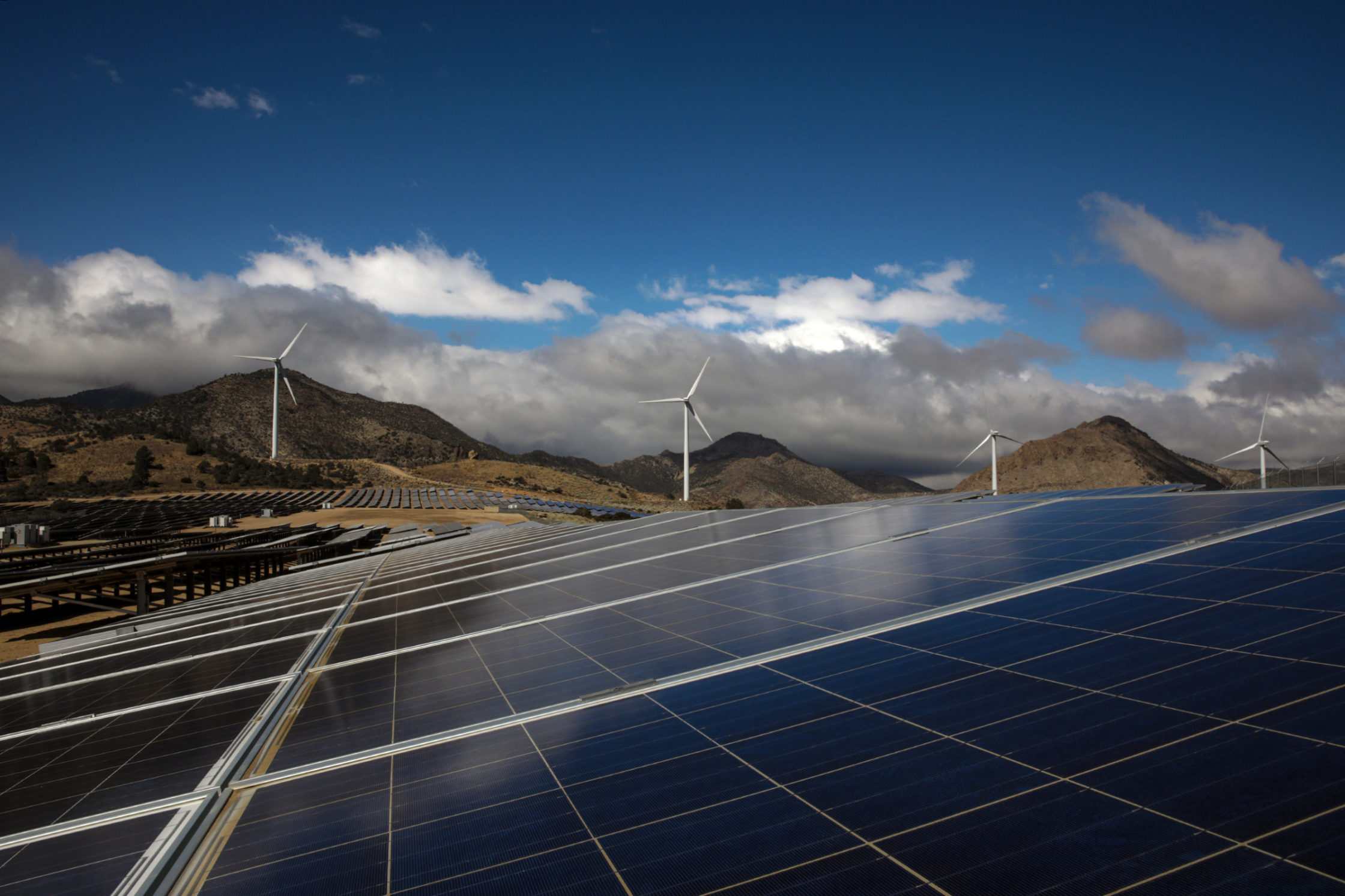
Climate campaigners and experts welcomed new renewable power projections released Tuesday by the Paris-based International Energy Agency.
Despite the coronavirus pandemic, the amount of renewable electricity capacity added last year soared by 45% to 280 gigawatts (GW), an increase that the IEA’s analysis expects to become the “new normal.”
Driven by “huge additions of solar and wind,” the increase in 2020 was the greatest year-on-year jump since 1999. The IEA forecasts that about 270 GW of renewable capacity will be added this year, followed by nearly 280 GW in 2022.
In other words, as Greenpeace put it in a Tuesday tweet 1 about the agency’s new report: “The future of energy? Bright and breezy.”
“Wind and solar power are giving us more reasons to be optimistic about our climate goals as they break record after record. Last year, the increase in renewable capacity accounted for 90% of the entire global power sector’s expansion,” IEA executive director Fatih Birol said in a statement.
“Governments need to build on this promising momentum through policies that encourage greater investment in solar and wind, in the additional grid infrastructure they will require, and in other key renewable technologies such as hydropower, bioenergy, and geothermal,” Birol added. “A massive expansion of clean electricity is essential to giving the world a chance of achieving its net-zero goals.”
This morning we released our latest Renewable Energy Market Update.
Don’t miss this thread from our Executive Director @fbirol 2 running through some of the key findings https://t.co/AqbwAXffeK 3
— International Energy Agency (@IEA) May 11, 2021 4
Ahead of a global climate summit planned for November, governments are in the process of revealing their updated commitments to cut greenhouse gas emissions in line with the Paris agreement’s more ambitious goal of limiting global temperature rise this century to 1.5°C. One analysis released 5 last week found that nations’ latest targets put the planet on track for 2.4°C of warming by 2100.
While greater government ambition and action is clearly needed to meet international goals, the latest projections still provided some hope. Heymi Bahar, lead author of the IEA’s new report, told 6 The Guardian that the 2020 renewables boom was “unprecedented.”
Bahar told the newspaper that record-level auctions for new renewable power projects by governments coupled with increased private business investments represents serious “momentum” and is set to become “the new normal for renewable energy.”
The IEA’s new numbers for the next couple years notably have been revised upward by over 25% from the agency’s November estimates 7 .
New @IEA 8 research shows:
Wind and solar energy grew at their fastest rate in two decades in 2020
Forecasts for 2021/22 have been revised upwards by more than 25%
High growth rates set to become the new normal #ItsPossible 9 https://t.co/N2XWDqjHsO 10
— UN Climate Change (@UNFCCC) May 11, 2021 11
Carbon Brief pointed out 12 Tuesday that “the IEA has repeatedly 13 raised its expectations for wind and solar over the past decade, drawing fire 14 from critics that say—in the words of a 2019 Reuters 15 article—that it has ‘underplay[ed] the speed at which the world could switch renewable sources of energy.”
Though action is needed across various industries worldwide to reduce planet-heating emissions, the energy sector is by far the biggest contributor. As the World Resources Institute noted 16 in December, “The top three greenhouse gas emitters—China, the European Union, and the United States—contribute 41.5% of total global emissions 17 , while the bottom 100 countries only account for only 3.6%.”
The IEA projects some shifts among top polluters in the years ahead:
China is at the center of global renewable demand and supply, accounting for around 40% of global renewable capacity growth for several years. In 2020, China’s share rose to 50% for the first time due to a rush to complete projects before government subsidies were phased out. In 2021-22 renewables growth in China is set to stabilize at levels that are below the 2020 record but still over 50% above where it was during the 2017-19 period. Any slowdown in China in the coming years will be compensated for by strong growth in Europe, the United States, India, and Latin America where government support and falling prices for solar PV and wind continue to drive installations.
The Guardian reported that the new IEA forecasts don’t take into account recent pledges from U.S. President Joe Biden, who took office in January and has since vowed to halve the nation’s emissions over the next decade. Though the plan represents a major shift from his predecessor, climate justice campaigners argue 18 it is “not good enough” and more must be done.